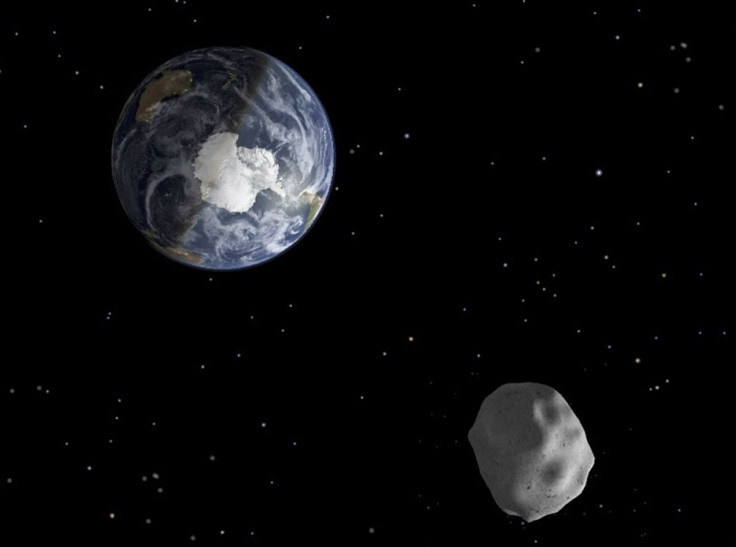New Asteroid '2013 EC' Similar To Russian Meteor To Pass Earth At A Distance Less Than Moon's Orbit

A newly discovered asteroid similar to the one that exploded over Russia two weeks ago is set to pass Earth at an approximate distance of the moon's orbit Monday, March 4, at 2:35 a.m. ET (7:35 a.m. UTC). The asteroid, identified as 2013 EC, was discovered by Arizona's Mount Lemmon Observatory Saturday.
Scientists have confirmed that this asteroid will not strike Earth or cause any damage as it passes our planet during its closest approach.
The big rock is similar in size to the meteor that streaked into the atmosphere and exploded over the Ural Mountains in central Russia on Feb.15. The asteroid is expected to be 10 to 17 meters wide.
The Russian meteor was 17 meters wide, with a mass of 10,000 tons, before it entered Earth's atmosphere. More than a thousand people were injured as the sonic boom caused by the explosion brought roofs down and shook buildings in the Ural region.
The newly found asteroid, named 2013 EC, traces a 246,000 miles journey to Earth, which is a little closer than the moon’s distance from Earth, at a speed of 20.20 km/second. The distance to moon’s orbit from the Earth differs between 363,104 to 406,696 kilometers (225,622 and 252,088 miles).
Gianluca Masi from the Virtual Telescope Project recorded a live stream of 2013 when it was about twice the distance of the moon.
“That we are finding all these asteroids recently does not mean that we are being visited by more asteroids,” Masi said during the webcast, “just that our ability to detect them has gotten so much better. Our technology has improved a lot over the past decades.”
The webcast uploaded in YouTube can be viewed in the link: http://www.youtube.com/watch?v=VVjOhRIkHeo
Although NASA-backed ground-based searches have identified the majority of potentially dangerous asteroids and other alien objects that came close to Earth, scientists believe there still can be surprise visitors, like the Russian meteor that caught scientists off-guard.
"We have the technology to deflect asteroids, but we cannot do anything about the objects we don’t know exist," Ed Lu, chairman and chief executive officer of the nonprofit B612 Foundation, wrote in a blog post after the Russian-meteor exploded.
NASA scientists have made headway in detecting 95 percent of the giant objects that pass near Earth’s orbit and that could destroy parts of Earth if they the atmosphere. Researchers have confirmed that none of these identified objects would cruise close enough to cause damage in near future. However, when it comes to the smaller objects, Earth appears more vulnerable as the scientists could identify only 30 percent of the 4,700 or so 330-footers (100 meters) that come uncomfortably close in their orbits, according to a report in Science on NBC News.
New information from NASA on the Russian meteorite reveals that it had been nearing Earth’s atmosphere for thousands of years, but remained undetected because it was hidden by the sun's glare.
© Copyright IBTimes 2025. All rights reserved.






















